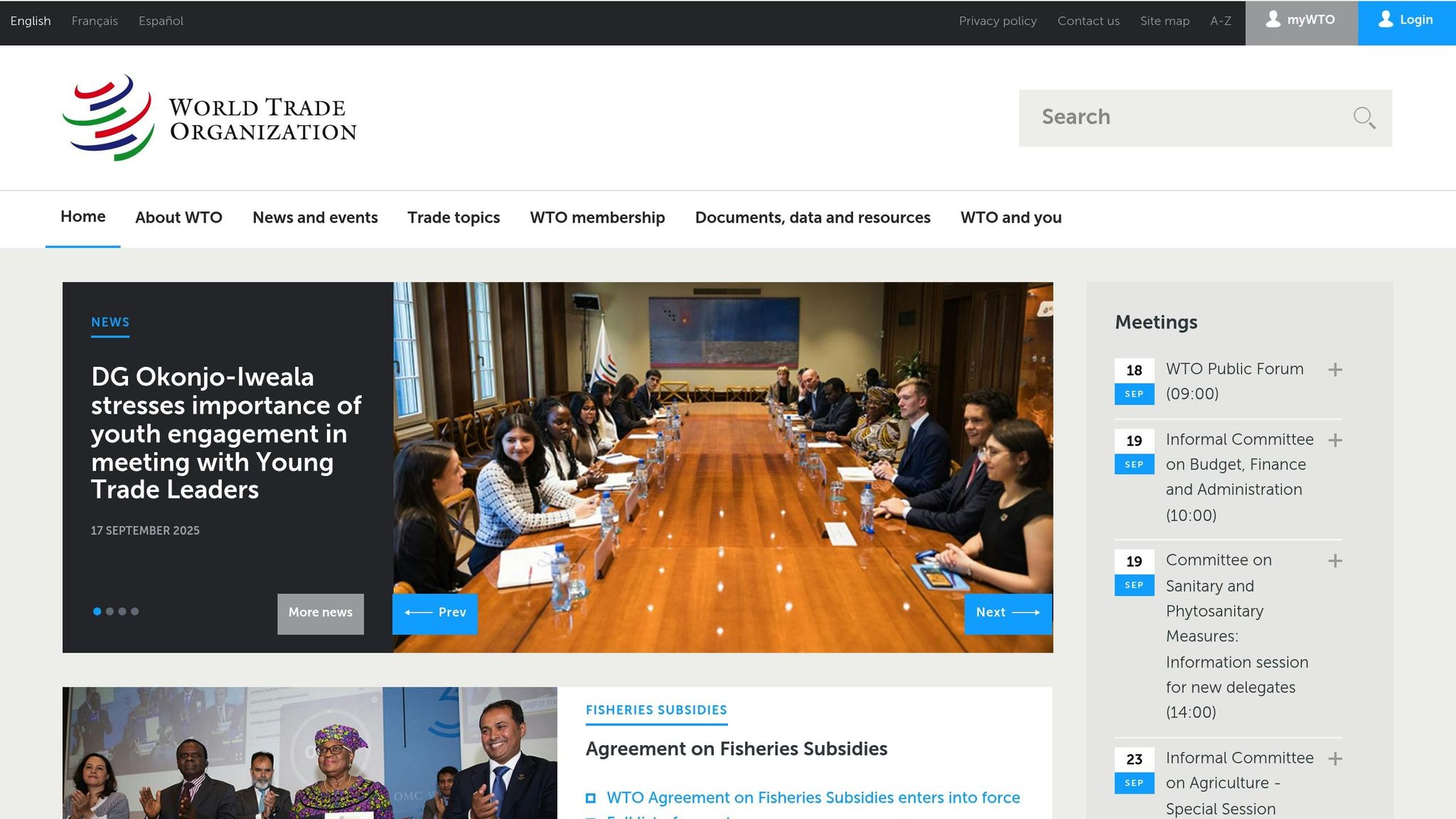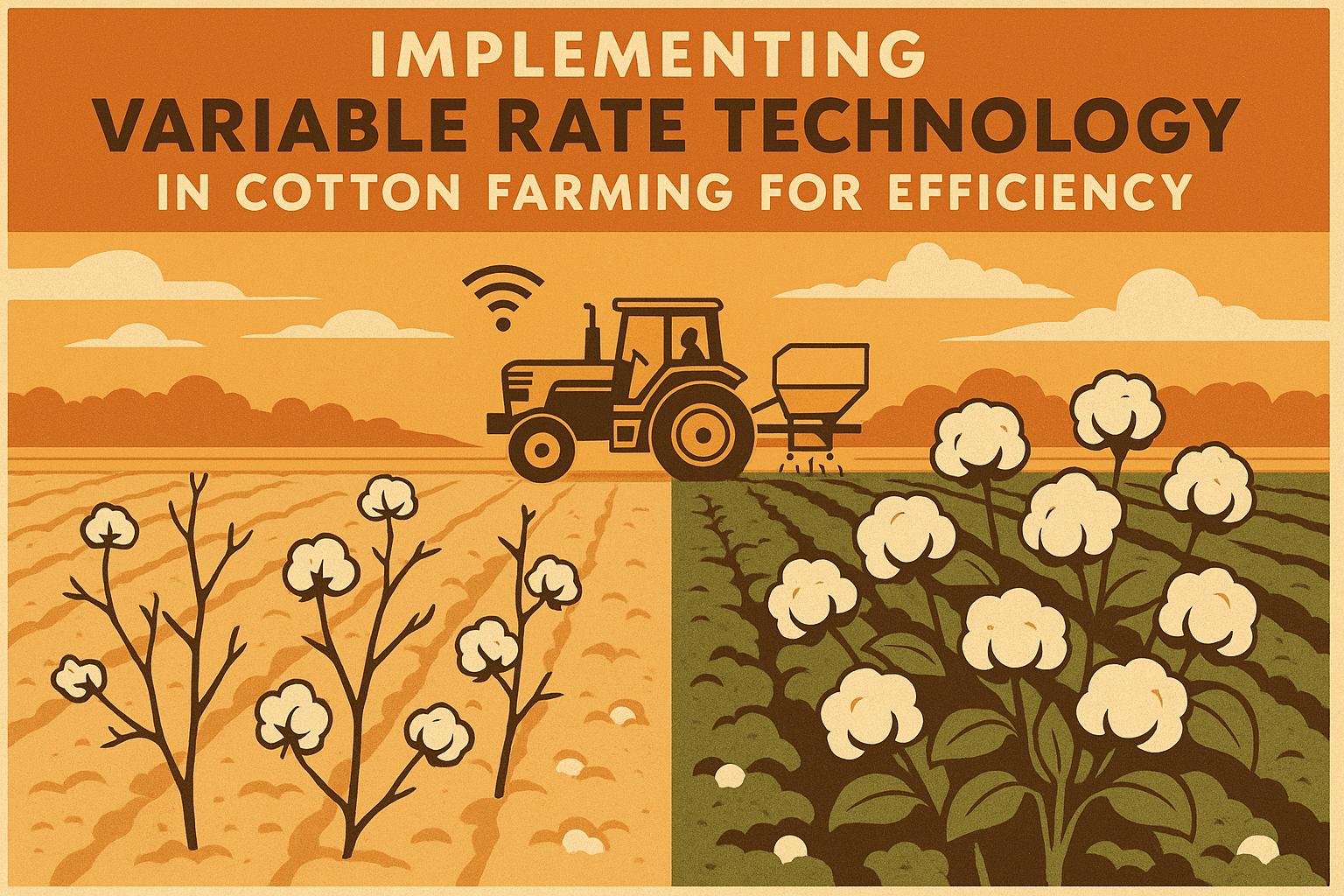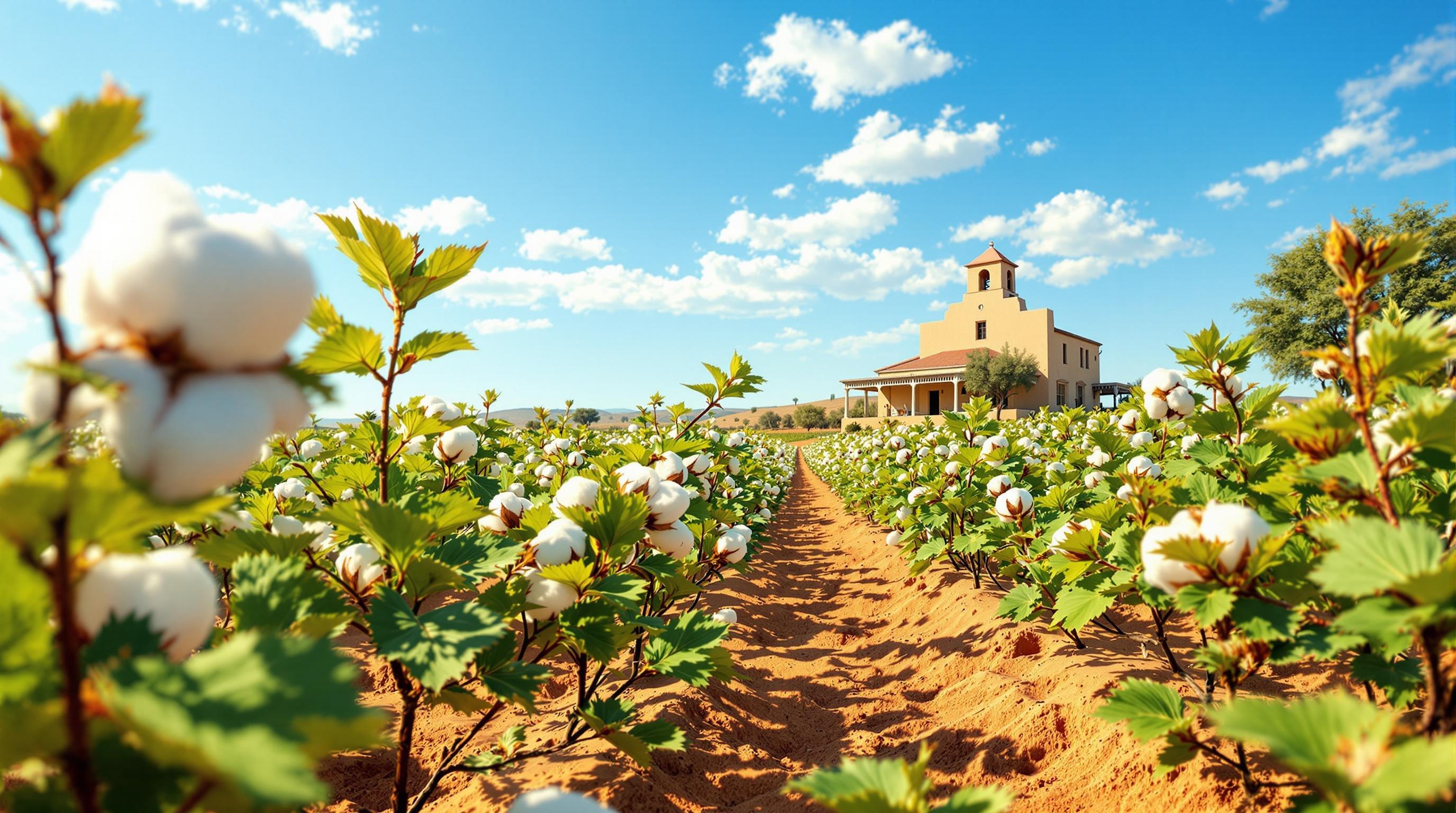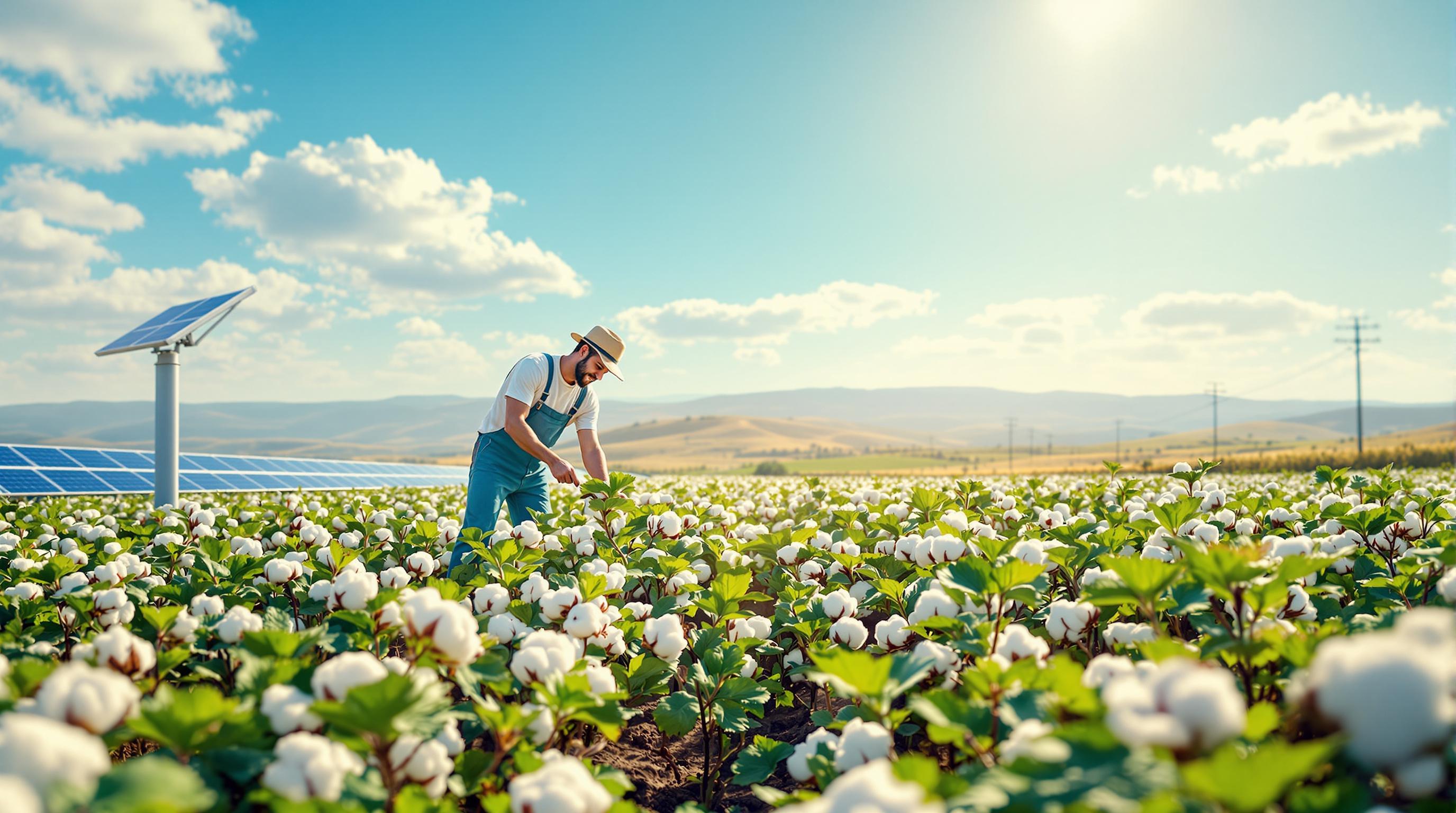U.S. cotton subsidies provide financial support to American farmers, ensuring stable production levels and reducing financial risks. However, these programs also disrupt global cotton markets by driving prices down, making it harder for farmers in developing countries to compete. Key points include:
- Subsidy Programs: U.S. initiatives like the Marketing Assistance Loan Program, Price Loss Coverage (PLC), and subsidized crop insurance lower costs for American farmers.
- Global Impact: Subsidies lead to overproduction, reduce global cotton prices, and create trade imbalances, disproportionately affecting cotton producers in regions like West Africa and Central Asia.
- Developing Nations: Farmers in these areas face income losses, rural unemployment, and reduced export revenues due to competition with subsidized U.S. cotton.
- Trade Disputes: Countries like Brazil and India have raised concerns, leading to international trade disputes and WTO involvement.
While these subsidies help U.S. farmers, they create challenges for global trade fairness and economic stability in developing regions. Future policies may address these issues by focusing on innovation, sustainability, and equitable trade practices.
The Cotton War Part 1 of 6
How U.S. Federal Cotton Subsidy Programs Work
The U.S. cotton subsidy system is built on several programs designed to address farming risks and market fluctuations. These programs not only provide crucial support to American farmers but also shape global cotton markets. Understanding how these subsidies work sheds light on their influence on domestic production and international trade.
Types of Cotton Subsidies
The U.S. cotton subsidy framework consists of multiple programs, each targeting specific challenges faced by farmers:
- Agriculture Risk Coverage (ARC): This program offers county-based coverage when actual crop revenue falls below a benchmark determined by historical yields and prices. By tailoring payments to local conditions, ARC provides targeted support to regions with unique challenges.
- Price Loss Coverage (PLC): Unlike ARC, PLC focuses on national market trends. It provides payments when the national average market price drops below a reference price set by Congress. This serves as a financial buffer for cotton producers during significant market downturns.
- Federal Crop Insurance: This safety net protects farmers against yield losses from adverse weather and revenue shortfalls due to price declines. The government subsidizes a large portion of the premiums, making coverage more affordable and accessible.
- Conservation Programs: These include initiatives like the Conservation Reserve Program, which pays farmers to take environmentally sensitive land out of production, and the Environmental Quality Incentives Program, which offers cost-sharing for adopting conservation practices on active farmland.
Together, these programs reduce financial risks and help stabilize production costs, creating a more predictable environment for cotton farming.
Economic Support for U.S. Farmers
Subsidy programs play a key role in lowering production costs and financial risks for cotton farmers. By providing insurance and revenue support, these programs allow farmers to make planting decisions with greater confidence, knowing they are protected against significant losses.
This safety net encourages stable production levels. With reduced financial uncertainty, farmers are more likely to maintain or even expand cotton acreage, ensuring consistent output even during challenging market conditions. This steady production supports the global cotton supply chain.
Additionally, subsidized crop insurance premiums help lower operating costs for farmers. By offsetting these expenses, subsidies enable producers to stay competitive, especially when market prices are under pressure.
Cotton Subsidy Trends Over Time
Over the last 20 years, spending on cotton subsidies has fluctuated based on market conditions and policy updates. The 2014 Farm Bill made a significant shift by replacing direct payments with programs like ARC and PLC, aligning subsidies more closely with market performance.
When cotton prices are low, programs such as PLC tend to distribute higher payments. Conversely, subsidy payments decrease when market conditions improve. Meanwhile, participation in crop insurance has grown, increasing the overall value of coverage as more farmers take advantage of this protection. These trends highlight how subsidies have adapted to meet the evolving needs of the industry.
How U.S. Subsidies Affect Global Cotton Prices
U.S. cotton subsidies play a major role in shaping global cotton prices and trade dynamics. These government support programs influence the global market, impacting producers, consumers, and entire economies. By lowering production costs for American farmers, subsidies disrupt natural price mechanisms and create shifts in market competition.
Price Distortions and Market Competition
U.S. subsidies significantly lower production costs, giving American farmers a competitive edge that allows them to sell cotton at prices that wouldn’t be possible under regular market conditions.
These subsidies, delivered through programs like crop insurance premium subsidies and revenue support payments, help cover various farming expenses. As a result, American cotton enters the global market at prices below its true production cost. This creates price distortions, as subsidized cotton drives down the overall price of cotton worldwide. Other cotton-producing nations are forced to compete with artificially low prices, creating an uneven playing field.
The impact of these subsidies becomes especially noticeable during times of high government payouts. For example, when programs like Price Loss Coverage kick in due to low market prices, they provide financial support that enables U.S. farmers to maintain profitability, even when selling at reduced prices. This financial cushioning exacerbates global price suppression and intensifies competition.
Effects on Developing Countries
The consequences of U.S. subsidies are most deeply felt in developing nations, where farmers lack similar government support to offset the effects of artificially low prices. Cotton producers in regions like West Africa, Central Asia, and South America often find themselves priced out of both local and global markets.
For many small-scale farmers, cotton is a critical cash crop. When global prices drop because of subsidized competition, their incomes shrink, pushing families closer to poverty. Unlike their American counterparts, these farmers don’t have access to safety net programs to weather such challenges.
The economic impact extends beyond individual farmers to entire nations. For countries heavily reliant on cotton exports, falling prices mean reduced foreign currency earnings. This can limit their ability to import essential goods or service international debt, creating a vicious cycle where they struggle to invest in agricultural improvements needed to compete globally.
Rural communities are hit especially hard. When cotton farming becomes unprofitable, many farmers abandon the crop altogether, leading to rural unemployment and migration to cities. This disrupts traditional farming communities and destabilizes local economies, with ripple effects that alter global export patterns.
Export Volumes and Trade Imbalances
U.S. subsidies don’t just affect prices - they also influence how much cotton the country exports. By reducing financial risks for American farmers, subsidies encourage higher production levels, often exceeding domestic consumption needs. The surplus cotton is then funneled into export markets.
This excess production allows subsidized U.S. cotton to dominate global market shares, displacing other countries that might otherwise export cotton. In markets where price is the primary factor, subsidized American cotton often outcompetes alternatives, regardless of quality or efficiency.
Such market displacement can lead to trade imbalances. Nations that could have been competitive exporters may find themselves becoming net importers instead, unable to match the artificially low prices of subsidized cotton. This reshapes global trade flows, often in ways that don’t align with the most efficient use of agricultural resources.
The timing of subsidy payments adds another layer of complexity. Large payouts can prompt U.S. farmers to sell their cotton at even lower prices, causing sudden spikes in export volumes. These seasonal distortions disrupt normal market cycles, making it harder for international buyers and competing exporters to plan effectively.
sbb-itb-0e617ca
Global Trade Effects and International Response
U.S. cotton subsidies have stirred significant international reactions, particularly due to their influence on global cotton prices. These subsidies have sparked debates about their role in disrupting market dynamics and creating trade imbalances, drawing criticism from various corners of the world.
Effects on Major Cotton-Producing Countries
Leading cotton-producing regions have voiced concerns over the challenges posed by subsidized U.S. cotton. In countries like India and Brazil, there’s growing unease about maintaining competitive conditions against artificially lowered prices. In West Africa, where cotton exports are vital to local economies, price fluctuations linked to subsidies have raised questions about long-term economic stability. Even nations with advanced agricultural systems, such as Australia, have struggled to hold onto their market share while competing with cheaper U.S. cotton. These difficulties have led to formal disputes and, in some cases, retaliatory actions.
Trade Disputes and Retaliatory Measures
The tension over cotton subsidies has spilled into global trade discussions. Many nations argue that these subsidies distort fair market practices and exacerbate pricing issues, pushing affected countries to negotiate or take retaliatory steps. These disputes underline the complexities of balancing domestic agricultural policies with international trade fairness.
World Trade Organization Role

The World Trade Organization (WTO) has become a key player in resolving cotton subsidy disputes. Within its framework, efforts focus on finding a middle ground between allowing nations to support their farmers and ensuring fair trade standards globally. While some policy adjustments have emerged from these discussions, reaching a broad agreement on meaningful reforms remains a challenge.
For more details on U.S. cotton production and industry resources, visit cottongins.org.
Policy-Driven Distortions: Case Studies and Future Outlook
Case studies highlight how U.S. cotton subsidies create ripple effects across the globe, reshaping local farming practices and influencing broader economic conditions.
Case Study: Impact on West African Cotton Producers
U.S. subsidy policies have had a profound impact on West African cotton farmers, particularly in countries like Mali, Burkina Faso, and Benin, where cotton is a cornerstone of smallholder agriculture.
Subsidies in the U.S. often lead to lower global cotton prices. For West African farmers, this means selling their high-quality cotton at prices that barely cover production costs. Many have been forced to reduce their reliance on cotton, shifting instead to subsistence farming or even migrating to seek alternative livelihoods.
The economic consequences don't stop at the farm. Cotton processing facilities in the region have seen reduced activity due to the drop in raw cotton availability. On an international scale, declining export revenues have become a recurring concern for the Cotton-4 nations (Benin, Burkina Faso, Chad, and Mali). These countries have voiced their frustrations in global forums, arguing that subsidized competition undermines their long-term economic development. This case illustrates how localized struggles reflect broader global trade policy imbalances.
Recent Trade Policy Changes
Shifts in trade policy have added new layers of complexity to the cotton subsidy landscape. For instance, during trade disputes, China imposed tariffs on U.S. agricultural goods, including cotton. This reduced demand in key textile manufacturing hubs, disrupting market dynamics almost overnight.
The United States-Mexico-Canada Agreement (USMCA) also indirectly affected the cotton market. While cotton wasn’t specifically addressed, changes in agricultural trade patterns influenced how subsidized U.S. cotton flows through North American markets.
Meanwhile, recent U.S. farm bills, like the 2018 Farm Bill, adjusted subsidy structures while maintaining core support programs. These changes included tweaks to payment formulas and eligibility criteria, reflecting ongoing debates over the appropriate level of agricultural support in a highly scrutinized global trade environment. Such adjustments hint at the potential for more significant changes in the future.
Future of Cotton Subsidies
Looking ahead, several factors could reshape U.S. cotton subsidy policies. Climate change is a growing concern, prompting discussions about whether subsidies should continue to encourage cotton farming in areas with limited water resources, given the crop’s high irrigation demands.
Advances in precision agriculture and biotechnology might shift the focus of subsidies from direct financial aid to investments in research and development, potentially fostering more efficient and sustainable farming practices.
Internationally, developing nations are gaining a stronger voice in trade negotiations. Platforms like the African Continental Free Trade Area, launched in 2021, offer African cotton producers a unified way to challenge subsidized competition on the global stage.
Domestically, political and economic pressures add another layer of complexity. Budget constraints and changing demographics in rural America are shaping debates over the scale and scope of agricultural support. Additionally, as major textile brands push for sustainably produced, traceable cotton, integrating sustainability standards into global supply chains may present both challenges and opportunities for future subsidy reforms. These evolving dynamics could redefine the global competitiveness of U.S. cotton.
For more details on U.S. cotton production facilities and industry infrastructure, visit cottongins.org, which offers a comprehensive list of cotton gin locations across the country.
Conclusion: Key Points on U.S. Cotton Subsidies and Global Trade
U.S. cotton subsidies play a dual role: they provide financial stability for American farmers while simultaneously influencing global trade dynamics. These policies, while beneficial domestically, often lead to ripple effects that disrupt international pricing and competitiveness.
Summary of Subsidy Effects
Programs like ARC and PLC offer economic relief to U.S. cotton farmers, ensuring consistent production levels. However, critics argue that these subsidies artificially lower global cotton prices, creating challenges for producers in developing regions, especially in West Africa. This imbalance fuels uncertainty throughout the global cotton supply chain, impacting farmers, exporters, and manufacturers alike.
Global Trade Considerations
The consequences of U.S. subsidy policies aren’t confined to domestic markets. Global trade disputes, such as China’s tariffs on U.S. cotton, underscore concerns about market equity. At the same time, initiatives like the African Continental Free Trade Area, launched in 2021, represent efforts by developing nations to address the challenges posed by subsidy-driven trade imbalances.
Looking Ahead
As the cotton industry navigates environmental challenges like water scarcity and tight budgets, future policies may shift focus. Investments in precision agriculture and biotechnology could replace traditional subsidies, emphasizing innovation over direct financial aid. With growing international calls for fairer trade practices, the cotton sector must evolve to maintain its relevance and competitiveness. For more on the latest developments in U.S. cotton infrastructure, check out cottongins.org.
FAQs
How do U.S. cotton subsidies impact farmers in developing regions like West Africa and Central Asia?
U.S. cotton subsidies allow American farmers to sell their cotton at prices that don't reflect true market costs, causing ripples across global markets. This practice hits farmers in developing regions, like West Africa and Central Asia, particularly hard. By driving global cotton prices down, these subsidies make it nearly impossible for small-scale farmers in these areas to compete, often slashing their incomes and deepening poverty.
Take West Africa, for example. Farmers there lose an estimated $250 million every year because of these subsidies. This isn't just a number - it represents weakened local economies, jeopardized food security, and livelihoods hanging by a thread. In Central Asia, the story is much the same. Farmers see their incomes drop and face growing economic instability, pushing already vulnerable communities further into hardship. These subsidies skew the playing field, leaving small-scale farmers worldwide at a disadvantage they simply can't overcome.
What concerns have countries like Brazil and India raised about U.S. cotton subsidies in global trade disputes?
Countries like Brazil and India have raised concerns about U.S. cotton subsidies, arguing that these financial supports artificially lower the price of American cotton on the global market. This, they contend, puts farmers in other nations at a disadvantage, making it tougher for them to compete fairly. They believe such subsidies disrupt the balance of international trade, harm their local cotton industries, and go against international trade agreements.
These grievances have been brought to global forums like the World Trade Organization (WTO), where these nations emphasize the importance of fair competition and equal opportunities in the cotton industry. The disputes underscore the broader conflict between the use of agricultural subsidies and the principles of free trade.
How could U.S. cotton subsidies change in response to environmental and global trade challenges?
U.S. cotton subsidy policies may evolve in response to increasing environmental concerns and international trade challenges. Past trade disputes, like those with Brazil, have highlighted the need for reforms to minimize the trade-distorting effects of subsidies and create a more level playing field in global markets. These pressures might push policymakers toward restructuring subsidies to better align with principles of fair trade.
Simultaneously, growing environmental awareness is prompting a shift toward more sustainable farming practices. Efforts may focus on curbing overproduction, reducing excessive fertilizer use, and promoting climate-conscious agricultural methods. Future policies are likely to emphasize conservation and sustainability while striving to meet the economic needs of U.S. cotton farmers and address global trade demands.


